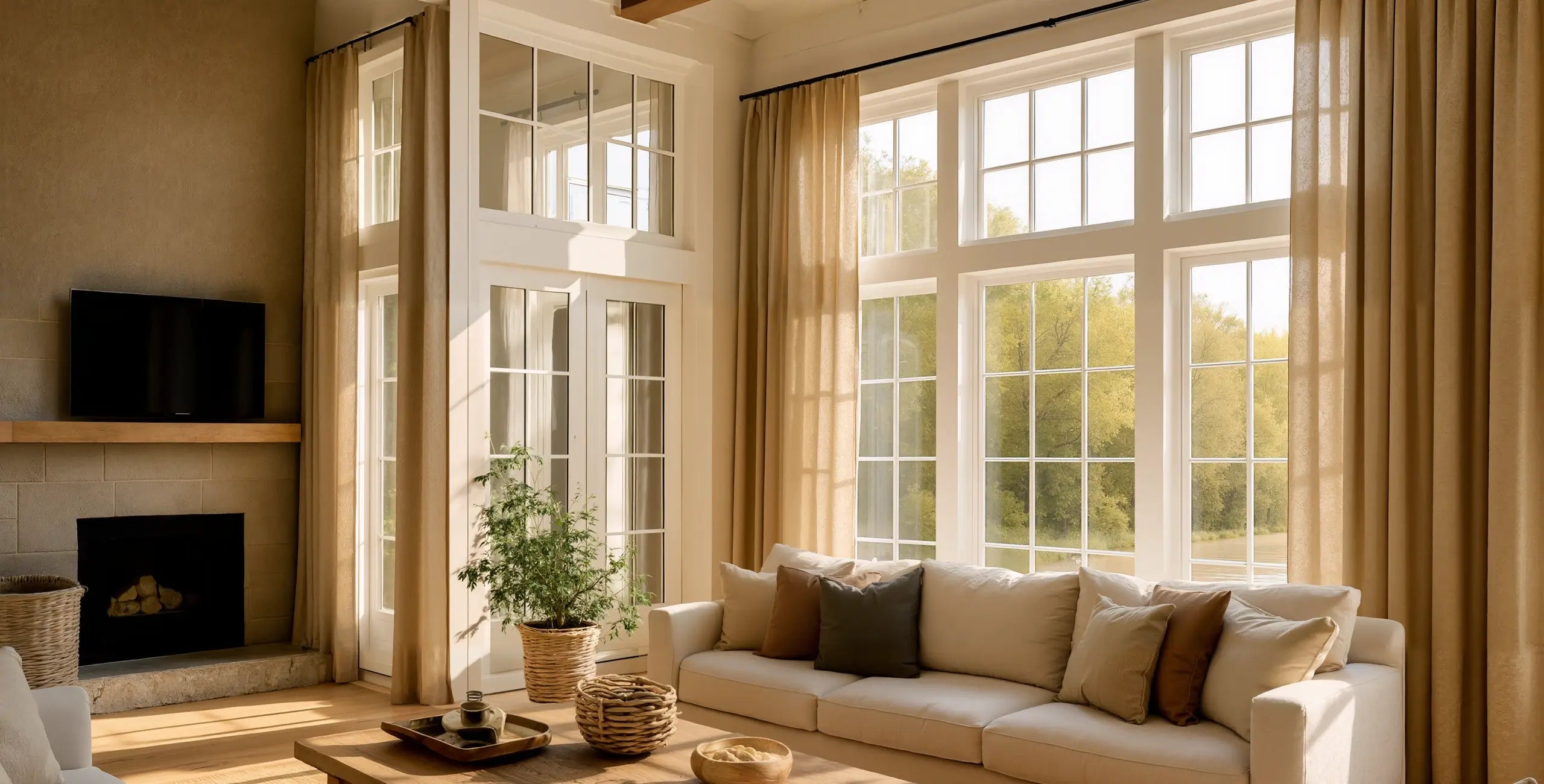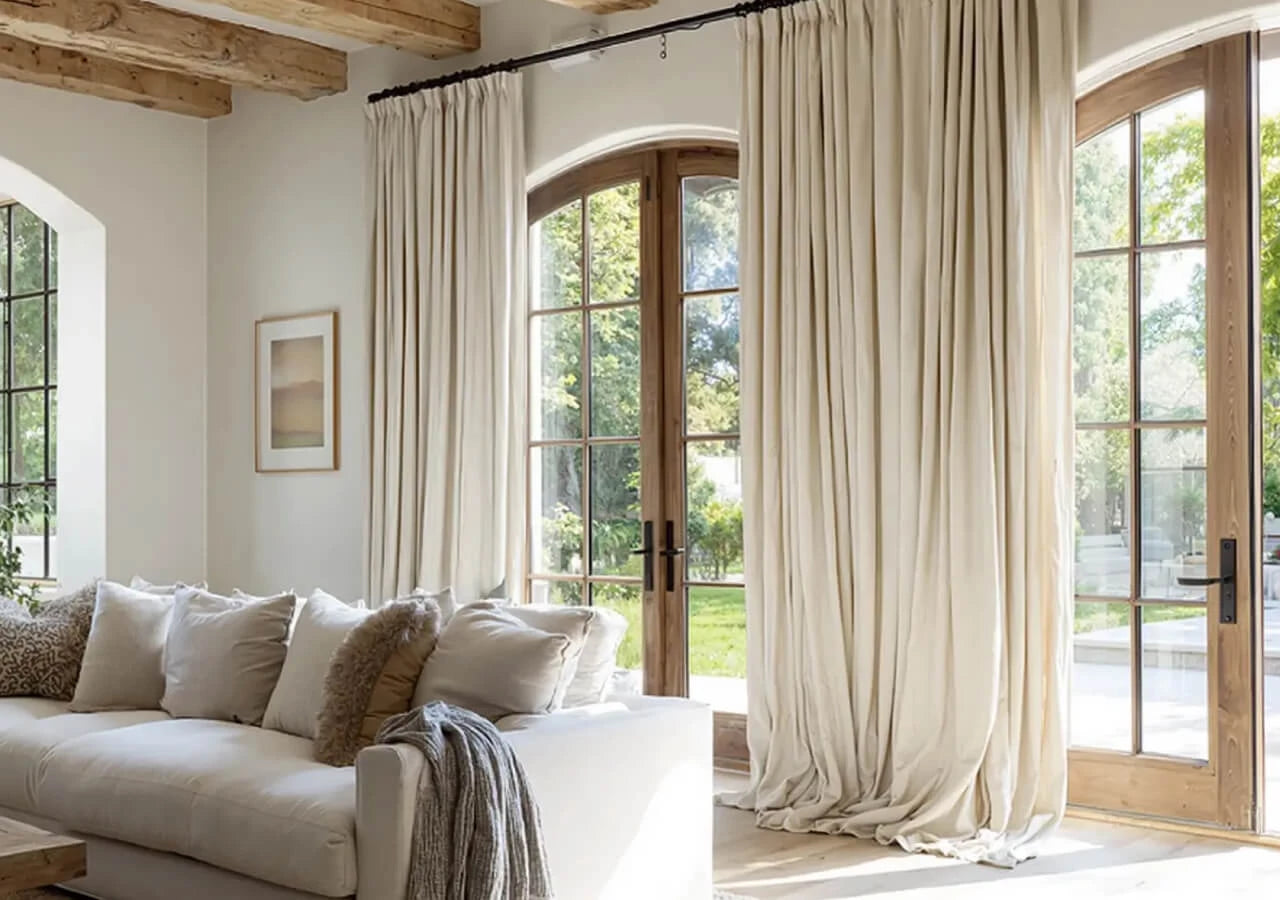If you’ve ever ordered fabric online — whether for curtains, furniture, or clothing — you might have been surprised (or even disappointed) when the material arrived. What looked like a warm beige on your laptop might turn out to be a cool gray in your hands.
This isn’t a trick by sellers — it’s the result of how colors are displayed on digital screens vs. how they appear in natural light. Let’s break down the key reasons for this gap and how to avoid costly mistakes.
1. RGB vs. Real-World Colors
-
Digital Screens Use RGB
Your phone and computer display colors using Red, Green, and Blue light (RGB). Every pixel emits light, which means the colors are backlit, vibrant, and slightly different from how pigments look in real life.

The colors are different under different lights. For example, the colors are different under yellow light and sunlight.
-
Real Fabrics Reflect Light
Physical fabrics rely on reflected light. A beige linen curtain will look warmer under yellow indoor light but cooler in daylight.

The color temperature on the screen will be lower than the color temperature in reality, so it will look a little bluer.
Tip: When buying fabric online, imagine the color without the glow of a screen — it’s usually a bit duller in real life.
2. Screen Calibration Makes a Huge Difference
Not all screens are created equal:
-
Smartphones: Often have saturated, vivid color modes for social media appeal.
-
Laptops/PCs: Color accuracy varies widely; cheaper displays may show washed-out tones.
-
Professional Monitors: Used in design work, calibrated to show colors more accurately.
Tip: If possible, check the fabric on multiple devices before ordering. If the color looks very different between your phone and laptop, expect more variation in real life.
3. Lighting in Photos vs. Lighting in Your Room
-
Seller photos are often taken in controlled studio lighting, which can make colors richer.
-
Your room’s lighting (warm yellow bulbs, cool white LEDs, or daylight) will dramatically change how a color appears.
-
Some fabrics, especially silk or satin, have a shimmer effect that changes tone depending on the angle of light.
Tip: Ask the seller for both daylight and indoor-light photos. If possible, request a short video — it captures color shifts better than still photos.
4. Camera Settings & Editing
-
Sellers may increase brightness or contrast to make a product look more appealing online.
-
Different camera sensors interpret colors differently — the same curtain may look slightly blueish on one camera and slightly yellow on another.
Tip: Check product reviews with buyer-uploaded photos to see the “real” color in normal homes.
5. Material Texture & Weave
-
Smooth fabrics like satin reflect light evenly, so their color appears more consistent.
-
Textured fabrics like linen or tweed scatter light, making colors look softer or slightly muted.
-
Pile fabrics (like velvet) can shift in tone dramatically depending on viewing angle.
Tip: If color accuracy is critical, order a swatch before committing to full-size curtains or upholstery.
6.Quick Checklist Before Buying Fabric Online
-
View the product on multiple devices.
-
Ask for photos in different lighting conditions.
-
Look for buyer photos/videos in reviews.
-
Understand the fabric’s texture and weave.
-
When in doubt, order a sample — it’s cheaper than a return.
7.Conclusion
Color differences between screens and real-life fabrics are inevitable due to technology, lighting, and material properties. The key is to anticipate these differences and take steps to minimize surprises.
At uscurtains, we understand how important color accuracy is. That’s why we provide free swatches, true-color photography, and lighting comparison images so you can be confident before you buy.




